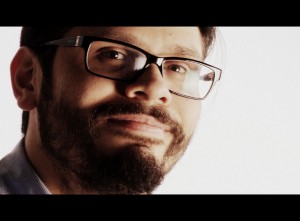THERAPIST SPOTLIGHT
By Luis Cano, MA
LPC, ATR
Most people can say they always dreamed of becoming whatever their current job situation is. But, without trepidation, I admit art therapy never registered in any of my fantasies. It all started as happenstance while attending a first-year drawing class at the University of Texas at El Paso in my hometown. At the time, I was dead-set on becoming a therapist because of my fascination with the human mind and its development through different environments.
Creating art was a true outlet for me. Whether it was drawing with charcoal or pencil to display my mood, connecting lines, or shading in a blank canvas allowed me to disconnect from the world around me and gain inner strength. Those were some of the conversations I had with my art classmates, one of whom brought up the idea of becoming an art therapist as a way for me to combine psychology and drawing – two of my life loves.
Making a mark
Just the idea of creating pictures with people, which in the process could help them heal or express themselves in a small way, felt like it would provide a huge impact. More so, it didn’t seem like a job to me. It felt like a career. That journey began when I made, at the time, my biggest life choice: moving away from my hometown of El Paso, Texas back in 2009. But, it was a risk I was willing to take because I knew the benefits of attending the Alfred Adler School of Professional Psychology in Chicago, Illinois. During my two-year stint at what is now known as Adler University, I was able to cultivate friendships and become immersed in the course work.
One of my favorites theories was Alderian, a concept that emphasizes the individual’s conation for success, accordance with others and improvements to society as being indications of mental health.
As I see it: my clients are people who have feelings of connections and disconnection, desires or beliefs of how they fit in society and, quite frankly, see the world through different-colored lenses. While going through all walks of life, in the end, as humans, we are all trying to do our best to contribute to society and gain a sense of belonging. In many ways, Adlerian theory shaped my current perspective on people and life.
Coming home
Nothing can replace the pride of giving back to the community which raised you. After spending several years away from the Sun City, I yearned to get back to my roots just like Alfred Adler encourages in his teachings. And, more importantly, begin to build a client list to spark my art therapy career. Just like a tired cliche, I saw a door, knocked a few times and it eventually opened.
The entryway just happened to be a starting point to Leah Miller, who is the founder and owner of the Counseling Center of Expressive Arts in El Paso. After a couple of discussions, Leah decided to take me on as her first intern and provide me with many of the tools I use today during my art therapy sessions. Back then, I was labeled an intern and felt like one. But my greatest learning lessons came through experience of making art and listening to what the art was telling me.
Stay fresh
Leah challenged me, while still going through the day-to-day grind, to continue drawing and allowing myself time to recover and self-reflect. I never knew how much that would help me learn not only about myself, but my clients. I began to relate to their own art processes and life journeys because of my experiences making my own art and understanding myself.
As in Chicago a couple of years earlier, I gravitated toward another discipline: client centered play therapy. Knowing that children could communicate their inner experience through the use of toys and play was a game-changer for me. It was another avenue, along with art, that could help me tap into a client’s internal drive to help them achieve wellness.
All of these tools help me show clients how to reach another zone of their brain, the creative side, which in turn allows them to disconnect from their current situation for a brief moment and share their experiences in hopes of rejuvenating their mind and gain a sense of belonging.
Time flies
Five years later, I’m still with CCOEA but upgraded from intern to fully licensed professional counselor and a registered art therapist. It’s been a trek filled with ups and downs like most. But I’ve been blessed to find myself surrounded by colleagues who have challenged my beliefs and ideas to make me a better counselor.
Like any artist, I’m doing everything I can to push the boundaries – whether it’s trying new techniques to reach a client or requiring my coworkers to change their perspectives. It would be a lie to say there have not been drawbacks with that method. Yet, no matter the obstacle, I’ve always found a way to learn and continue to draw.
That’s something I can admit I always dreamed about.


